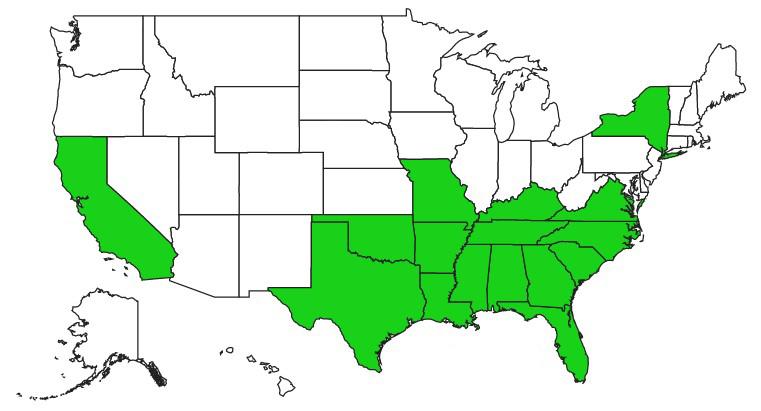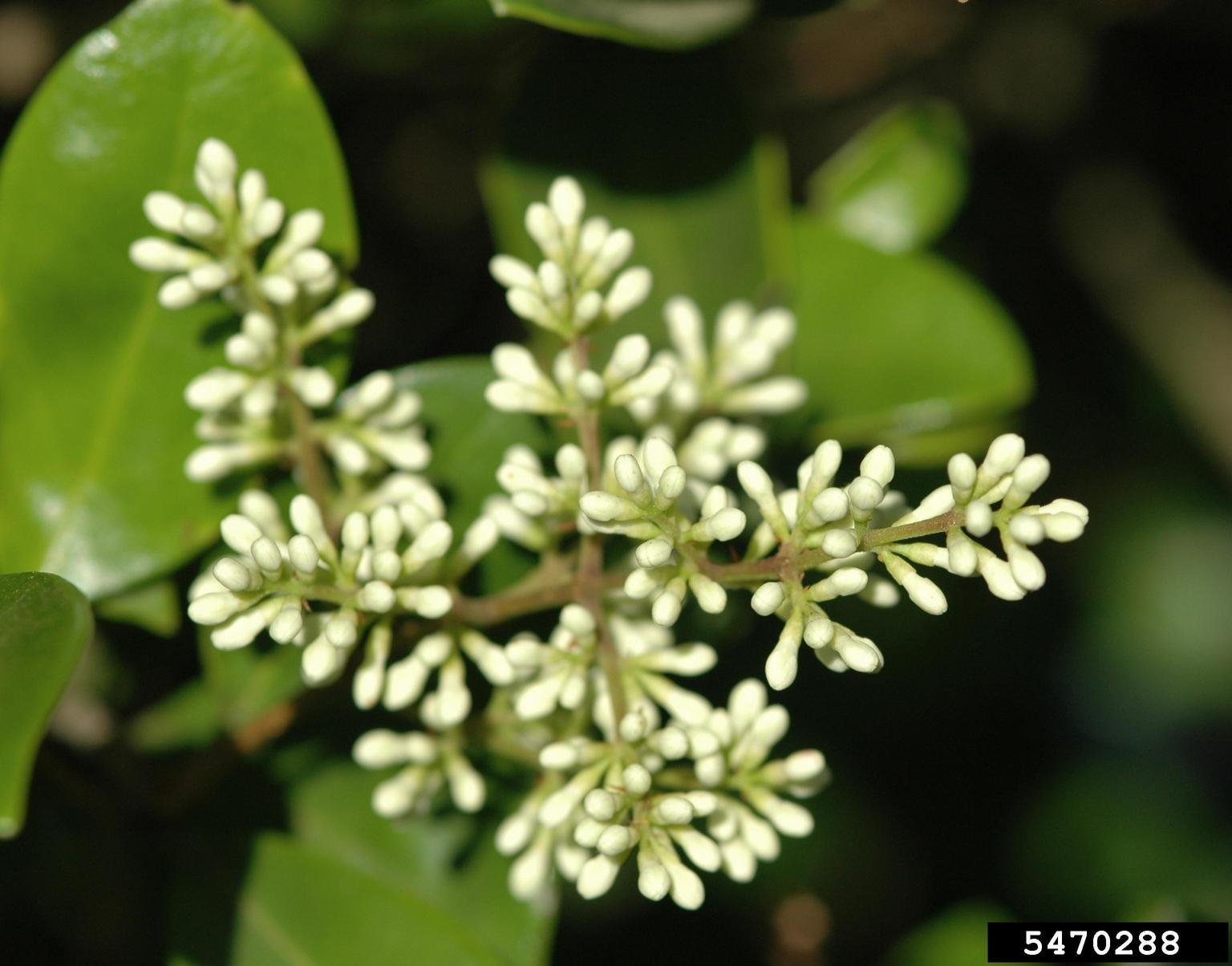The prospective homeowner noted the landscaping around the home on the corner lot. The realtor said that the home had been one of the first to be build when the development began in 2005, which was one of the reasons the lot was larger than many in the neighborhood. There was a great deal of open space behind the house, a mix of single trees planted on the north side of the property, and a nice sized red maple in the west-facing front yard. Next to the house on that same west side was a trio of shrubs. Two were familiar: an azalea and a rhododendron, that grew next to the front steps. The third dominated the others, growing as high as the first floor windows. During this summer day, it had abundant bright white blooms that bees were visiting. The landscaping, which was sure to provide shade during the summer and a windbreak during the winter, was a selling point. Only later did the homeowner recognize that this large shrub was actually a Japanese privet, an Asian invasive plant.
The privet family is native to Europe and Asia, but not to North America. Japanese privets are less common than other privets that are more widespread across the eastern U.S. Reported sightings in the mid-Atlantic are sparse. However, the distribution map below may not reflect the species’ full extent, based on its continued use in landscaping.

What is it?
Japanese privet (Ligustrum japonicum) was introduced to the U.S. from Japan in 1845 as an ornamental plant. As is the case with many introduced species, the intentional plantings in disturbed areas such as for landscaping around homes and buildings have led to its escape into more natural surroundings. It can thrive in floodplains, fields, and woodland edges. It may also appear in woodlands that have recent harvest areas. As with the house lot mentioned above, it can outcompete native species for resources and take over a small area in just a few years.
Privets in general are considered invasive in many parts of the United States. In Maryland, the family of plants is considered a Tier 2 invasive plant, which requires retail outlets to prominently display the plant’s status.
How does it spread?
The plant spreads mainly through the dispersal of seeds found in its berries. The berries are consumed by birds and the seeds are spread through droppings. They can also spread via stump re-sprouting, in which sprouts may be spread out after an individual plant has been cut.
How can I identify it?
Japanese privet can be identified by the berries mentioned above, which are present almost year round. The small, oblate-shaped green berries turn purple in the fall. The plant’s leaves are oblong and opposite on the stem, with smooth edges, 1 to 3” in length. The four-petaled flowers are trumpet-shaped and appear in clusters along the stem in late spring to early summer. The plant’s bark distinguishes it from native lookalikes like flowering dogwood or blackhaw, which also have oval, opposite leaves. The natives both have highly textured bark; Japanese privet bark is smooth. See the image gallery below.
How can I control it?
A variety of methods can control Japanese privet, depending on the plant’s size and level of infestation. Small individual plants can be removed by hand-pulling or using a “weed wrench”-type tool. Be sure to remove all the roots as they may re-sprout. Herbicide applications by foliar spray can be effective, although the spray should contain a mix of glyphosate and triclopyr, as the mixture is more effective than just glyphosate alone. Basal bark treatments have also been effective.
For more information:
Learn more about Japanese privet:
Japanese Privet (Invasive Plant Atlas of the United States)
Privet (University of Maryland Extension Home & Garden Information Center)
Ligustrum japonicum (North Carolina Extension Gardener Plant Toolbox)
Privet (Penn State Extension)
